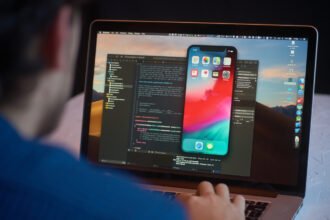Rogue Wave Software is a company I know through their acquisition of Visual Numerics (VNI) (first reviewed here). Owned by Battery Ventures, Rogue Wave operates independently and is profitable. Their objective is to create scale in the development tool and embeddable component space focusing on high-performance computing – both in the traditional HPC environments and the emerging mainstream high-performance computing market. The acquisitions of Visual Numerics and TotalView Technologies support that strategy. With the exception of the major platform vendors, there are only very small companies in this space.
Their core philosophy is that lots of customers value the ability to change hardware and operating systems to improve price/performance without having to rewrite applications. Rogue Wave’s focus (and the focus of the companies it acquired) was on this kind of cross-platform, abstracted development. The TotalView debugger was built initially for cross-platform and very high-performance computing applications while VNI focused on components for embedding high-performance analytic components…
Copyright © 2010 http://jtonedm.com James Taylor
Rogue Wave Software is a company I know through their acquisition of Visual Numerics (VNI) (first reviewed here). Owned by Battery Ventures, Rogue Wave operates independently and is profitable. Their objective is to create scale in the development tool and embeddable component space focusing on high-performance computing – both in the traditional HPC environments and the emerging mainstream high-performance computing market. The acquisitions of Visual Numerics and TotalView Technologies support that strategy. With the exception of the major platform vendors, there are only very small companies in this space.
Their core philosophy is that lots of customers value the ability to change hardware and operating systems to improve price/performance without having to rewrite applications. Rogue Wave’s focus (and the focus of the companies it acquired) was on this kind of cross-platform, abstracted development. The TotalView debugger was built initially for cross-platform and very high-performance computing applications while VNI focused on components for embedding high-performance analytic components. C++, they say, is not dead and rumors of its demise (like those of the demise of the mainframe) are exaggerated. They feel that lots of applications still need very high performance and so use C++.
The various acquisitions had good technical synergy (given the shared focus on cross-platform high-performance computing) but also had good customer synergy – many are using all three products because they are focused on the kind of high-performance computing problems that the three companies all targeted. Rogue Wave has a focus in finance, telecom and government/defense with a large OEM business including folks like Huawei, Sybase and SAP. Chip manufacturers are also interested because the tools allow companies to exploit multi-core environments, for instance. Without tools like Rogue Wave’s, the newer chips will not necessarily result in better performance.
This is the core of the matter, in many ways. Computing architectures are evolving and being driven by both science and research as well as by the increasingly complexity / scale of business problems (more data, more graphics, streaming and real-time systems). Overall the architecture is moving from making a single chip faster to multi-core and to hybrid CPU/Graphical Processer Unit processing. There is more and more demand in mainstream computing for use of this kind of computing architecture – a need to take advantage of massively parallel architecture and this is outside the usual range of problems tackled by developers.
Traditionally the high-performance computing world has a far thinner range of tools than mainstream development tools. Mainstream development tools support modeling, requirements management, testing and debugging, shared development, etc. In high-performance computing there are limited editors and debuggers, with text editors and “print” statements dominating. The changing architecture market means that there is a need for new tools aimed at mainstream developers that support the new architecture. In addition they see an opportunity for cross-platform, vendor-independent tools. In their view, the platforms include those of the database and data warehouse vendors to support in-database or in-warehouse analytics.
Focus areas include prototyping with PyIMSL Studio and PV-WAVE allowing Python to be used for analytic prototyping; abstraction with IMSL and SourcePro for numeric and other computationally intensive systems that don’t want to be hard-wired to a platform; debugging with the TotalView and ReplayEngine products.
Rogue Wave clearly sees high-performance computing as a growth area and growing demand for embeddable, cross-platform, abstracted yet high-performance architecture-ready components.






